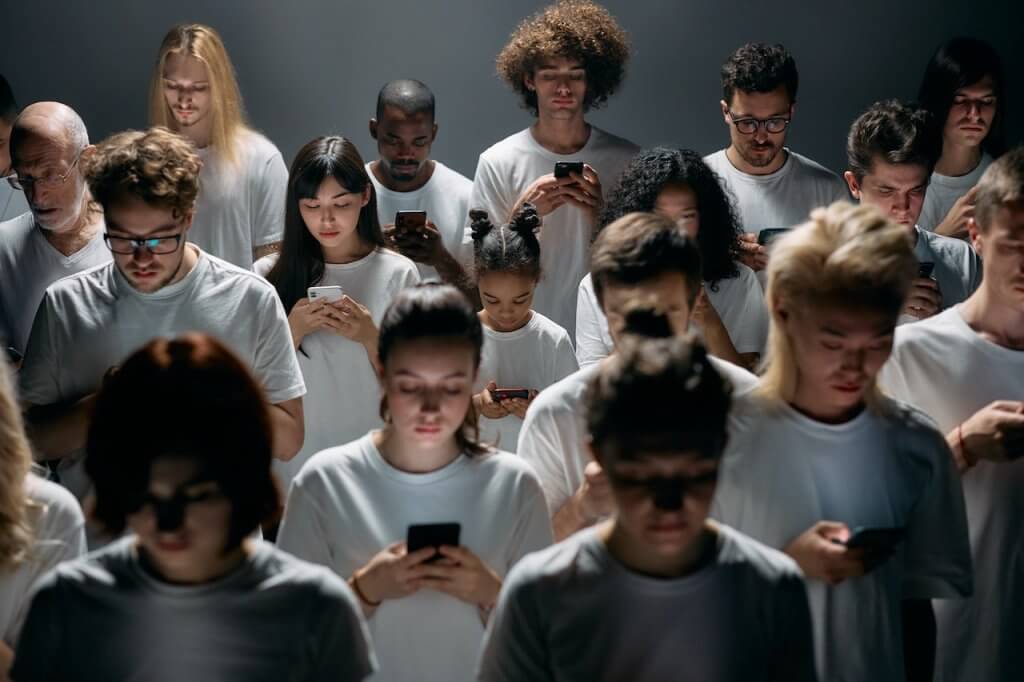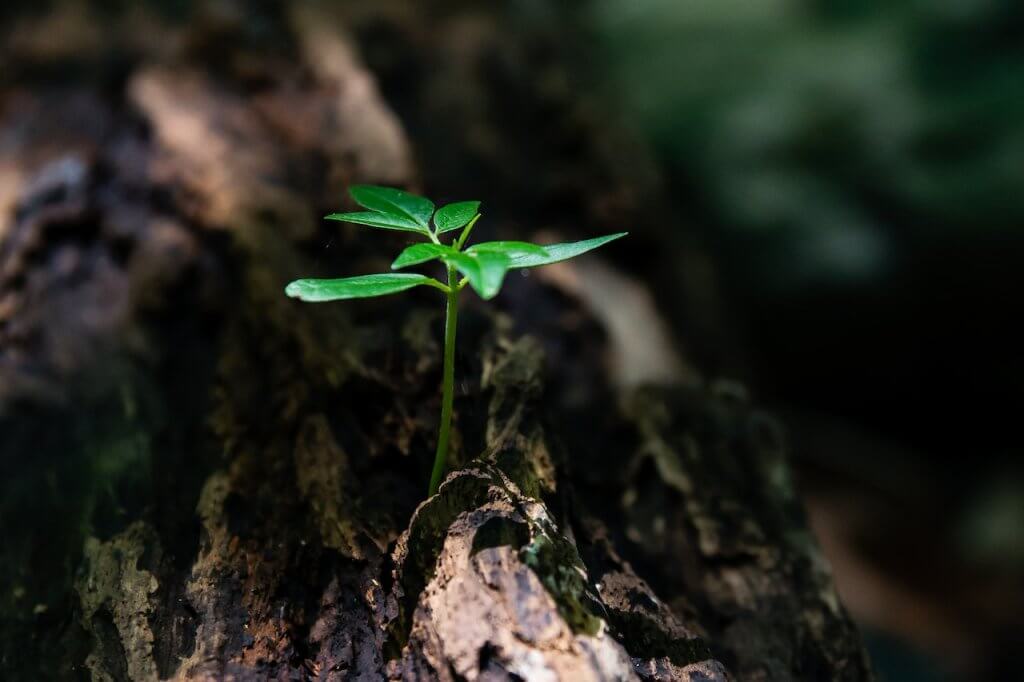In today’s fast-paced digital world, finding a meaningful connection can feel like searching for a needle in a haystack. The complexities of modern dating and relationships are amplified by an array of choices, digital distractions, and societal pressures.
In this follow up to my post on Understanding the Challenges in Modern Dating, I wanted to provide the start of a series on practical solutions to the issues in dating, relationships and connection with each other. The advice is often the same for both the process of dating as well as maintaining relationships. This post will focus on how to maximise your chances of successful dating and relationships, and not how to meet people in the first place. That will be for a future post. However, a good portion of the advice will aid in that area too- that of finding someone in the first place, so it’s good to read and take on board all aspects of this post too.

DEALING WITH THE QUANTITY
Here’s the thing, you potentially match up with a lot of people. Probably on the order of over 50 million people in the world. Sounds too big? That’s less than 1% of the global population, so it’s realistic in fact.
Even if it’s 10 million, or 5 million, or just 1 million, there’s simply not enough time to try everyone out and see what works best. You do not have the time to try, yet are presented with near infinite choices. This is a truly horrifying dilemma at times.
We know this as the ‘paradox of choice’. The more choices we have, the more we are paralyzed in being able to make a choice, and the more we view each option, including potential partners, as expendable. This mindset can lead to a cycle of shallow relationships that lack depth and meaning.
The saying that has arisen out of this collective cultural mindset is: ‘there’s plenty of fish in the sea’. The statement is true of course, but it fails to address the aspect of time.
And so we have some options:
- Do we spend our lives trying as many partners as we can in the hope to find the best possible match?
- Or do we find the best possible match within a timeframe and then commit and make it work?
The choice is up to you, but let’s assume you want to get better at dating and relationships for the purpose of finding someone to love, and to be loved by. The rest of this post focuses on the aspects that help make things work on a more permanent basis, and not on shallow engagements.
To start, we want to focus on avoiding spreading ourselves too thinly across multiple superficial interactions, and instead on fostering quality connections. These are the relationships that offer more than just fleeting excitement; they provide emotional support, intellectual stimulation, and a deep sense of belonging. As a side note, this applies to both friendships and romantic relationships.
Practical Tips:
1. Know Your Values: Before diving into the dating pool, have a clear understanding of your own values. This will help you find someone who aligns with what’s important to you. If you don’t know what your values are, that’s where something like mental health coaching or therapy helps you identify them and learn to live by them.
2. Take Your Time: Good things often take time to develop. Understand patience is required and that good relationships are formed OVER TIME.
3. Be Present: When you’re with someone, be fully there. Being present and in the here and now in dating allows you to truly get to know the other person and assess your compatibility in the things that matter.

BEING TRUE TO YOURSELF
When social media, and especially Tinder, changes us into objects that can be curated and not cultivated, we face the battle of being true to ourselves. This does not mean being narcissistic, self centred or delusional about what being true to yourself means.
Being true to yourself means being authentic. And being authentic means actualizing your potential, using your mind to think (turn off the autopilot) and paying attention to when you are bullshitting yourself– something that we all do, and some of us do to an extremely high degree.
The Pressure to Conform
We’ve all felt it—the societal pressure to play a certain role or act a certain way to be deemed “dateable.” This pressure often leads us to put on masks, hiding our true selves in the process. The progressive automation that accompanies conformity leads to a lack of thinking and awareness of one’s own conditions, leading to a loss of personal meaning- that is, not being authentic and acting in bad faith to oneself is a sure path to self destructive behaviour.
Why Authenticity Matters
Being authentic allows for deeper, more meaningful connections. When you’re true to yourself, you invite your partner to do the same, creating a virtuous cycle of openness and trust. Authenticity eliminates the need for constant guessing and game-playing, laying the foundation for a relationship built on mutual respect and understanding.
If you are not authentic, and when the performance of not being authentic ends (and it will), both you and the relationship collapses. Authenticity in relationships is not just a buzzword; it’s a necessity.
Practical Tips:
1. Be Open About Your Inner World: We are often scared to be vulnerable and reveal our inner world because our own sense of self is fragile. This is also why we bullshit ourselves and engage in self deception. It takes courage to be vulnerable, so we should cultivate that.
2. Communicate Your Needs: If something bothers you, speak up. Effective communication starts with honesty. Develop the ability to communicate effectively.
3. Drop the Facade: Be yourself from the get-go. It’s easier to maintain a relationship built on truth than one built on deception. It’s also vital if you want to make it last.

FROM “ME” TO “WE”
In a culture that often promotes hedonistic (the pursuit of pleasure) individualism and self-preservation, it’s easy to focus solely on our own needs and desires. While self-care is important, a relationship is a two-way street. Emotional walls may offer protection, but they also prevent meaningful connections.
Moving from a “me-first” approach to a “we-first” mentality can make all the difference. This doesn’t mean losing yourself in the relationship; rather, it means creating a space where both individuals can flourish together.
It’s about understanding that any interaction is a shared experience that you are both involved in. Our current culture is one where we treat relationships as ‘things to have’ rather than something to ’be a part of’. This is one concept from the psychologist Eric Fromm that is about ‘having’ and ‘being’ modes.
In Erich Fromm’s conceptual framework, “having” and “being” represent two distinct modes of existence. The “having” mode is about possessing, acquiring, and holding onto things, including relationships. In contrast, the “being” mode is about experiencing and genuinely engaging with the world and people in it.
When it comes to love, the “having” mode and the “being” mode represent two fundamentally different ways of relating to others.
Having Mode in Love: In the context of love, the having mode treats the loved one as a possession or an object. Love, in this mode, is conditional and subject to the same cycles of acquisition and disposal as any material possession (think Tinder). Essentially, one might think, “I have a partner, therefore I am loved,” equating the mere presence of a person in one’s life with the complexity and depth of love.
- Being Mode in Love: In the being mode, love is an active power. It’s not about owning the other person but about truly understanding, caring for, and engaging with them. It is based on the authentic sharing of one’s self, with mutual growth and flourishing. Love, in this mode, becomes an act of freedom and an expression of one’s essence. It is not confined by conditions or the need to possess the other.
Practical Tips:
1. Listen Actively: Make an effort to understand your partner. The foundation of any healthy connection is one often wanting to understand and to be understood by another.
2. Small Acts, Big Impact: We want to continually be kind by helping facilitate and be open to the emotional connection you and the other person want. When your partner is tired and says so after coming home from work, we have an interest in understanding them, not just passing it off with a comment or ignoring it.
3. Be Curious: Take the time to really get to know your partner. Ask questions, be interested, and dig deeper than surface-level conversations. Often, this curiosity is stimulated when we first perform our own honest introspection independently. We want to understand ourselves first so we have the capacity to be curious enough to want to understand others.

LOVE AS A STATE, NOT AN EMOTION
Love is not an emotion. We may describe it as such, but it’s not. The modern, mainstream perspective often reduces love to an emotion, largely thanks to the influence of popular media, literature, and a culture that tends to emphasise fleeting experiences over enduring states.
This conception sees love as something that “happens to us,” a sort of magical condition that is either “in the air” or not. In this framework, love can easily be “fallen into” and “fallen out of,” as if it were as transient as any other feeling like anger, sadness, or joy.
This understanding can be limiting and even damaging, as it sets unrealistic expectations and ultimately commodifies the complex phenomenon of love.
Love As a State of Being
The idea that love can encompass pain, joy, happiness, and even sorrow points toward its complexity and depth, making a compelling argument for it being a state of being rather than a mere emotion. If love were just an emotion, it would be difficult to explain how it can hold within it the capacity for such a wide range of emotional experiences.
Emotions are typically understood as responses to specific circumstances or stimuli—love as an emotion should, theoretically, be a response to specific “lovable” conditions. However, if we’ve ever experienced or witnessed enduring love, we know it persists even when conditions are far from “lovable.”
For example, the love a parent has for a child can bring immense joy and satisfaction but can also be a source of indescribable pain and worry. Similarly, romantic love can produce heights of joy and depths of sorrow, often in quick succession. If love were just an emotion, how could it contain these multitudes?
Love as an Existential State
When we view love as a state of being, it becomes a lens through which we interpret the world, a stable foundation that informs not just our highs and lows but our mundane, everyday experiences. Love becomes a background existential “mode” that encompasses a variety of emotional states, be it happiness, sorrow, anxiety, or even anger. It is a constant that enables us to face the trials of life, anchoring us in a way that individual emotions cannot.
The ancient Greeks called this ‘state of being’ as ‘Agape’. Agape is characterised by selflessness and a total commitment to the well-being of others, often at the cost of one’s own needs or desires. Agape transcends superficial factors that usually prompt feelings of love, such as physical attraction or shared interests. Instead, it is all-encompassing and enduring, reflecting an active decision to love unconditionally. It is therefore a mode of being.
By seeing love as a state of being, we can approach it with the depth and complexity it deserves, allowing it to be rich, multifaceted, and enduring. It provides a robust framework for understanding love and for negotiating the inevitable challenges that arise in any loving relationship. It shifts our focus from “having” love to “being” in love, the latter of which suggests a more genuine, existential engagement with ourselves and the world around us.

RELEVANCE REALIZATION
In our hyper-connected world, it’s easy to be physically present but mentally elsewhere. Whether it’s the constant pinging of our phones or the nagging thoughts about work or life, these distractions prevent us from fully engaging in our relationships.
Being present isn’t just a trendy concept; it’s a cornerstone of meaningful relationships. Present moment awareness allows you to tune into your own feelings as well as your partner’s, creating a deeper emotional connection.
So to facilitate this, the most important skill and tip in this post is Relevance Realization (RR).
RR is about tuning into what’s truly important in the moment, filtering out the noise and focusing on what matters. For example, recognizing the significance of a partner’s bad day at work over your desire to watch the latest episode of your favourite show. RR is a cognitive ability we all have, though if not used can become lacking. Treating it as a skill we can improve means we gain access to a host of benefits, especially in the realm of connections with ourselves and other people.
Practical Tips:
1. Being Present: While it’s normal for attention to wander, paying attention to our attention (yes- we have this ability) is something we can improve to make sure we are there for our relationships.
2. Digital Detox: Designate tech-free times to focus solely on each other. This should be no surprise, but it’s easy to make excuses and treat the matter of digital detoxes as not important.
3. Prioritise: Use relevance realization to focus on what’s truly important in your relationship, whether it’s spending quality time together, supporting each other’s goals, or living in alignment with shared values.

GROWING TOGETHER
Relationships, like anything else in life, can become stagnant if not nurtured. Complacency can set in, leading to a lack of growth both individually and as a couple.
To ensure growth in a relationship, we start by making sure growth is something a part of us as a person. After all, our potentiality is only actualised when we make the possibility and conditions for growth in ourselves salient. We overcome our own bullshit this way, and therefore allow for the conditions for growth.
And like an individual, a healthy relationship should be a partnership that encourages both parties to grow and evolve. This mutual growth not only strengthens the relationship but also enriches each individual’s personal journey.
A saying to go along with this is ‘build bridges, not walls’. When we see the relationship as a shared experience, in the ‘being mode’ as described earlier, we set the stage for growth and long lasting commitment.
Practical Tips:
1. Shared Values & Goals: Developing shared values is crucial to long term stability. Likewise set mutual goals, whether they’re about finances, health, or personal development.
2. Learning Together: Take up a new hobby or interest as a couple. This not only adds excitement but also fosters mutual growth.
3. Check-ins: Regularly discuss your individual and collective values and goals, and make adjustments as needed to ensure you’re both on the same path.

TALK THE TALK
Misunderstandings and miscommunications are common culprits behind relationship issues. Whether it’s not listening attentively or failing to express oneself clearly, poor communication can create unnecessary barriers and problems.
To be successful, communicating is not just about conveying information. It’s more than just talking—it’s connecting.
When you truly listen and express yourself honestly, you create a safe space for both parties to be heard and understood. Communication to connect deeply is not easy, and it is a skill that needs continual development.
Expecting your partner to know what you want or what they should do is nonsense. We hardly know ourselves properly, let alone someone else- so do not expect others to know you better than you do yourself! With a healthy dose of humility we should start the process by assuming nothing, and go from there.
To develop good communication, we need to be able to recognize what is most important, most relevant in that moment. This is relevance realization that was referred to earlier.
Practical Tips:
1. Active Listening: Practise active listening by giving your full attention and providing feedback.
2. Open and Honest Dialogue: Don’t shy away from difficult conversations. Tackle issues head-on with openness and honesty.
3. Non-Verbal Cues: Pay attention to body language, tone, and other non-verbal cues that can provide additional context to what’s being said. For example, physically turning towards a person, whether it’s a positive or negative situation, continually has been shown to be important in being able to manage conflict and sustain a relationship through good and bad.

RESPONDING WELL
In the pursuit of deeper, longer-lasting connections, understanding and responding to each other’s needs for emotional and psychological connection becomes crucial. Connection is more than just spending time together; it’s about being present and attuned to each other’s inner states, thereby enriching the very fabric of the relationship. Achieving this requires transcending the realm of superficial interactions and tapping into the more nuanced dimensions of human connection.
In essence, what we are doing is responding to each other’s needs for connection.
Doing this well is a fine art and is never perfected- you spend the rest of your life working on this.
Practical Tips:
1. Set time aside for check-ins: Schedule regular check-ins to see how each of you is going, and how you think the relationship is going. If the relationship is rocky, start with every few days or weekly. Once there is a good flow, make it monthly. This is a chance to connect with each other with intention.
2. Pay Attention: Your attention is yours to give, and you never lose it. You simply direct it where you will (another reason to turn off autopilot). Connecting well means paying attention and holding it there as required.

CREATING MEANING
Even in the closest of relationships, existential loneliness can creep in. We often look for external sources to give our relationships meaning, but this can lead to a never-ending search that leaves us unfulfilled.
The key to a fulfilling relationship is to create your own values and meaning within it- together. It’s about enriching your relationship with shared values and goals.
As humans, meaning is our primary motivating life force. Meaning in life combats the inherent suffering in it. And shared meaning in a relationship does the same. It’s not always smooth sailing, so a shared meaning is a good ingredient in a long term commitment.
Practical Tips:
1. Deep Conversations: Move beyond small talk and engage in conversations that explore your deepest fears, aspirations, and beliefs.
2. Shared Rituals: Create rituals or traditions that are unique to your relationship, adding a layer of personal meaning.
3. Mutual Support: Be each other’s cheerleader. Support each other’s individual pursuits, recognizing that personal growth contributes to the growth of the relationship.

SUCCESSFUL CONNECTION
Navigating the complexities of modern dating and relationships is no easy feat, but it’s not impossible. By focusing on authenticity, meaningful connections, mutual growth, effective communication, and embracing the present moment, you can find and nurture a fulfilling relationship.
While the word ‘relationship’ is featured more often than ‘dating’ in this post, it should be noted that it doesn’t matter whether you have just met someone or are a few years into a relationship. All these principles and tips apply the same way.
You do not need to wait for a certain milestone to connect deeply with someone. Communicating well starts from the beginning. Seeing a relationship in the ‘being’ mode rather than the ‘having’ mode is not something we wait to meet someone for. Authenticity starts before we get into a relationship, but if we are in one and aren’t authentic, we can start at this moment and improve on that.
The journey may be challenging, but the rewards are well worth the effort. After all, relationships are both the source of the most joy and meaning in our lives, as well as the most suffering. Building a relationship that not only survives but thrives in the modern world is not impossible- you just need to know how to go about it.





